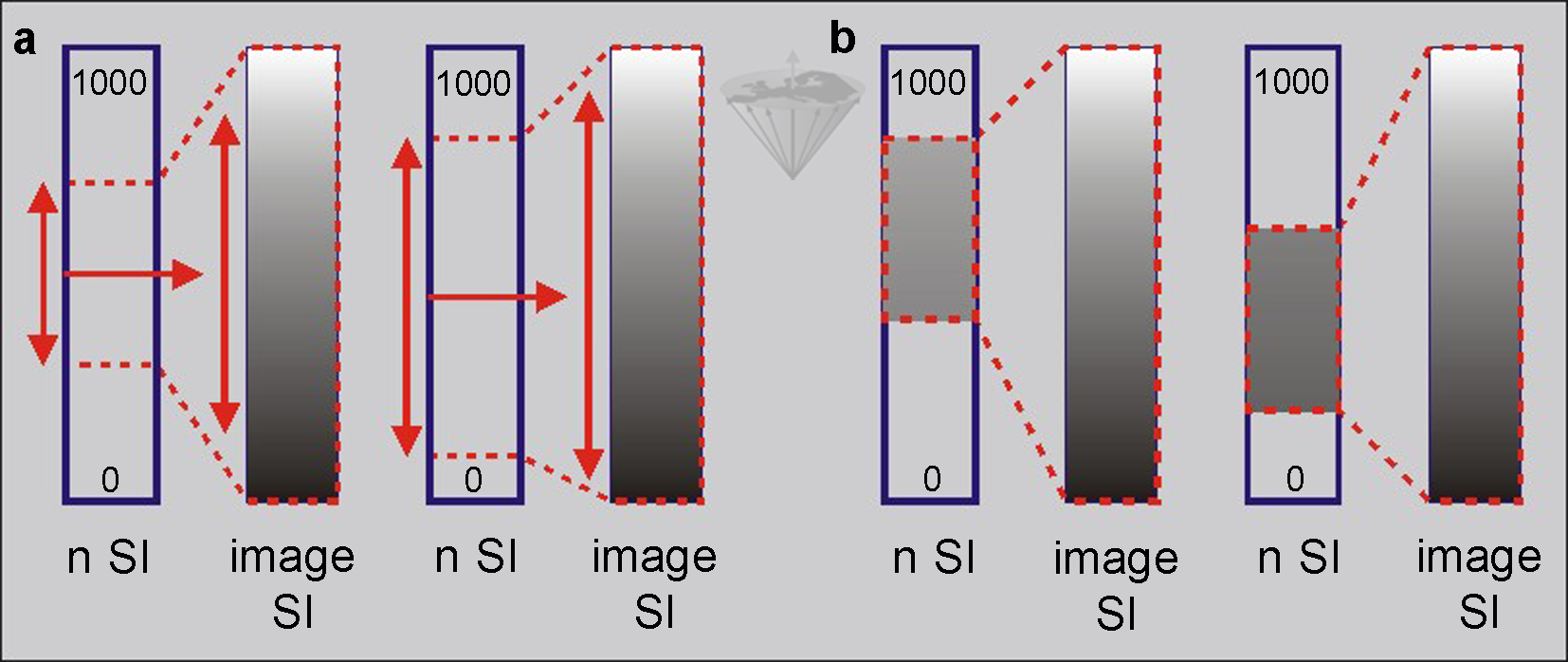





 n screen, the image gray scale can be adjusted. This is well known from x-ray CT and described as windowing. Windowing influences the image contrast by attributing certain levels on the gray scale to certain signal intensities.
n screen, the image gray scale can be adjusted. This is well known from x-ray CT and described as windowing. Windowing influences the image contrast by attributing certain levels on the gray scale to certain signal intensities.
Never forget that windowing is completely independent of the MR image acquisition and processing; it is just image contrast manipulation on screen. It changes a high dynamic range image to a lower dynamic range image —it changes the dynamic 'window'.
Figure 09-15 illustrates how the signal intensity of a pixel is determined by windowing. The image gray scale is dependent on both window center and level.
Images to be compared with each other should always have the same window level and center. If this is not the case, comparisons of structures with different signal intensities may be misleading.

Figure 09-15:
Windowing, by which the image signal intensity is adjusted so that white corresponds to the highest signal intensity and black to the lowest one.
(a) The window level can be narrowed or widened, and (b) the window center can be moved up and down.
The signal intensity scale in the image depends on both the window center and level. The original numerical signal intensity scale (n SI) does not reflect the final signal intensity gray scale (image SI).